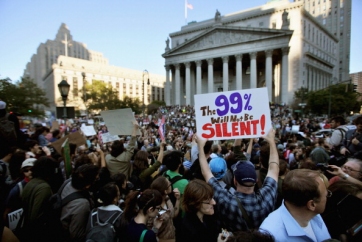March 28, 2012
The Other 1 Percent
 I dreaded the meeting.
I dreaded the meeting.
Negative, sometimes brutal messages on listservs, blogs, and other forums had drained my energy, twisting and dampening my anticipation of connecting with colleagues.
If it ends up being three days of more of the same, then that’s it. I’m done, I told myself.
On the night before the meeting, the dark place bubbled up, and I bared my frustrations to a small group. For someone who rarely cries, the tears came unbidden.
They were shocked. They expressed their support. And mostly, they listened.
Somehow, naming the problem aloud released some of its power over my emotions. By the next morning, I didn’t feel so angry or frustrated. I was ready to learn and share and connect. And it was wonderful. My fears were misspent.
But I also learned an important lesson about group dynamics – one that plays out time and again in our churches, organizations, dioceses, and even, gasp, among the leaders in The Episcopal Church. It’s the 1 percent who sharpens arrows on the backs of the 99 percent. They while away the days with snarky comments on listservs, with whining and complaining about everything – big and small – but rarely offering solid solutions for ways to move forward.
I honestly believe that the vast majority, I daresay 99 percent, of the people in our churches and communities are committed to building up the body of Christ. But I too often give the 1 percent disproportionate attention. I allow their rants and digs to define the organization – or the church – and to push me to the edge(s).
I’m not naïve enough to think that we can stop the 1 percent. But I do think we can be deliberate about occupying the same spaces, that we can be purposeful in our conversations in ways that build up instead of only tear down, that we can model ways for civil, respectful discourse – even (and especially) when we disagree.
Let us show the other 1 percent how the 99 percent live and love.





